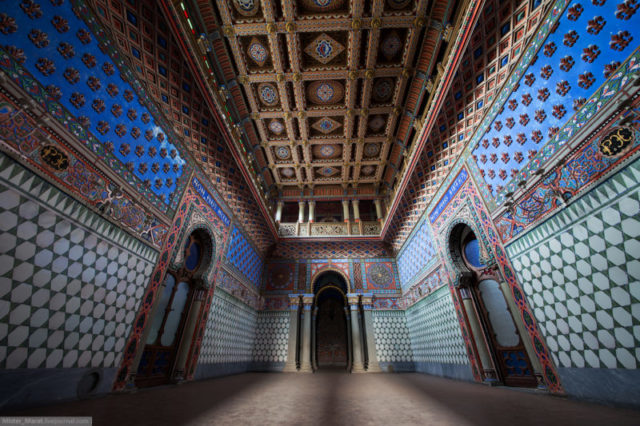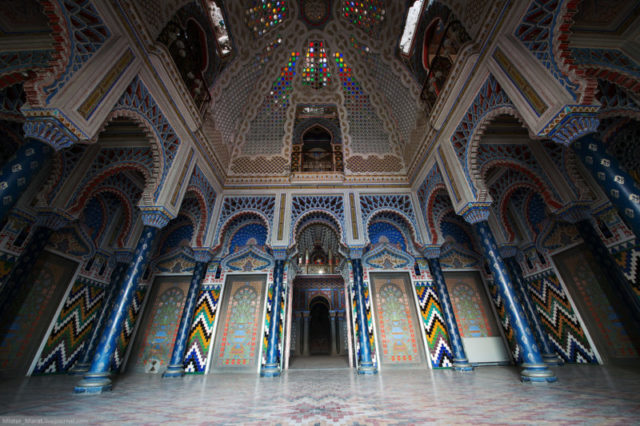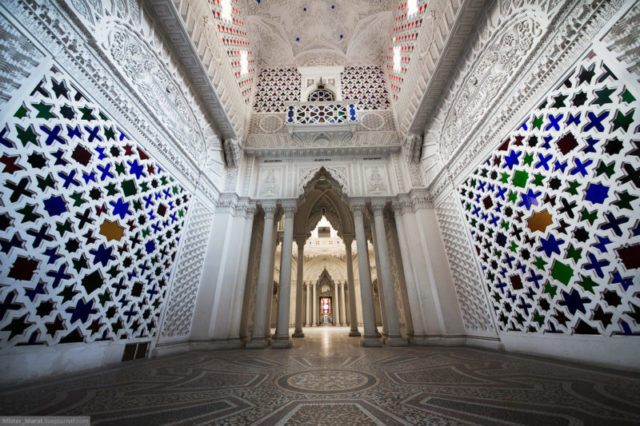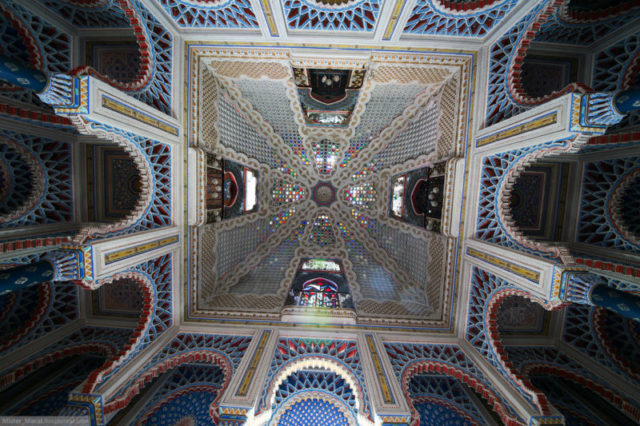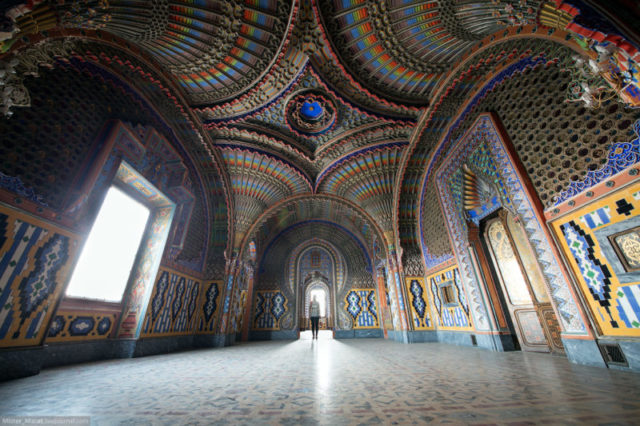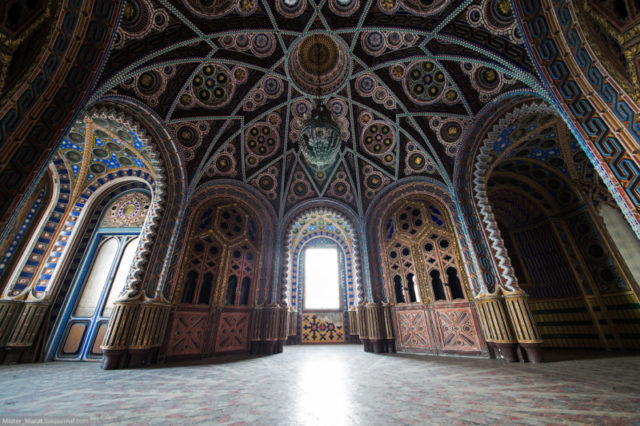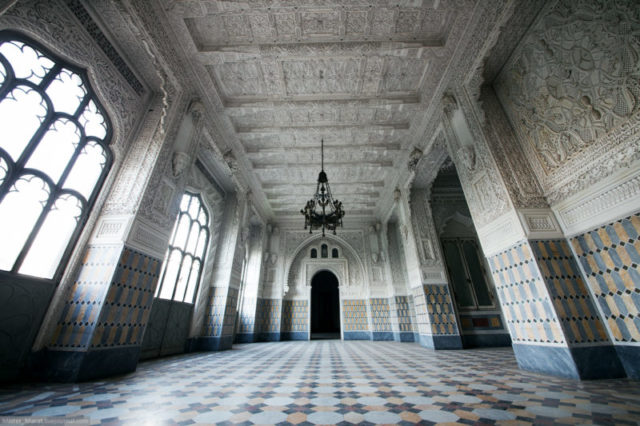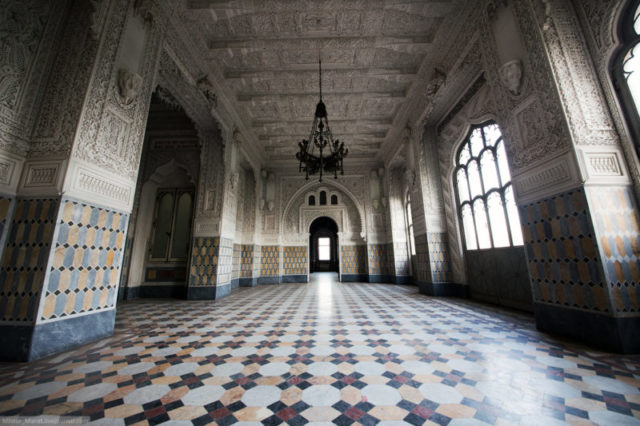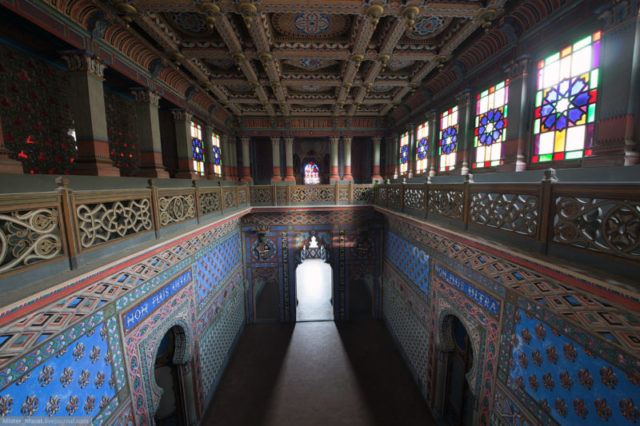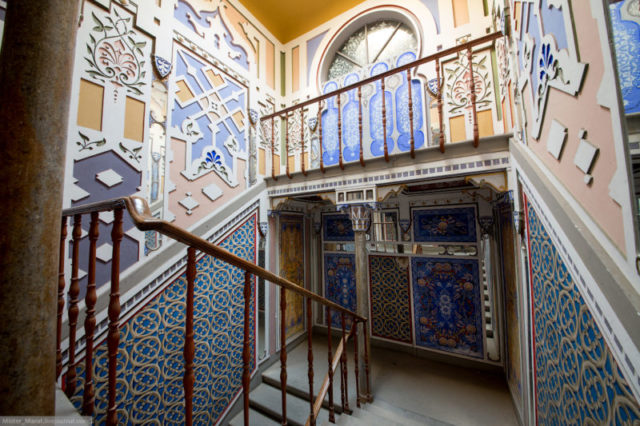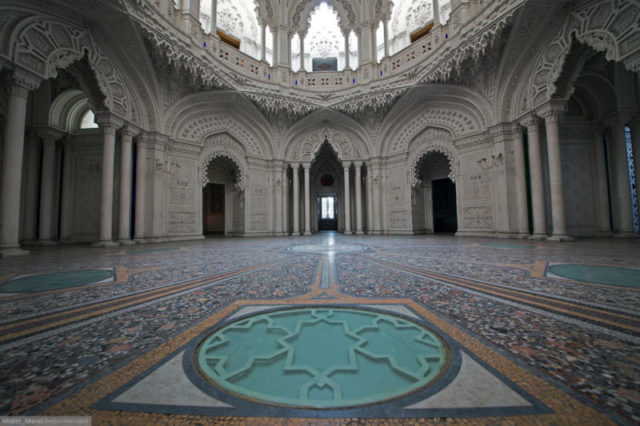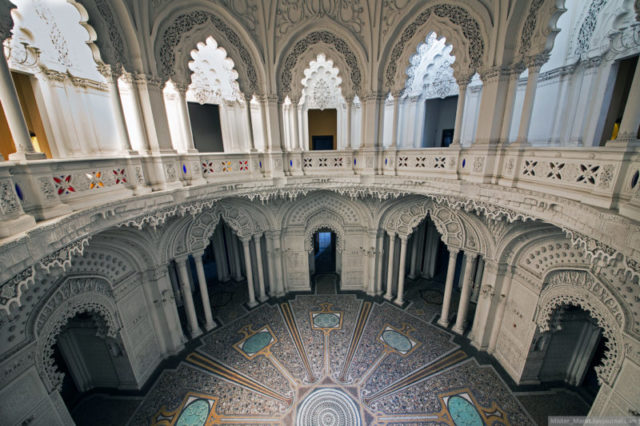Less than 25 miles south of Florence in Leccio, Italy, the magnificent Sammezzano Castle rises up on top of a hill. Surrounded by a dense parkland that reveals the castle’s splendor incrementally as it is approached, this abandoned jewel of Tuscany has been vacant for more than 20 years.
The castle was built in 1605 by the noble Ximenes d’Aragon family, who bought the land from Giovanni Jacopo de’Medic. The history of the site can be traced back to the times of the Roman Empire. It is said that Charlemagne passed this place in 780 on his way to Rome, where he brought his son to be baptized by the Pope.
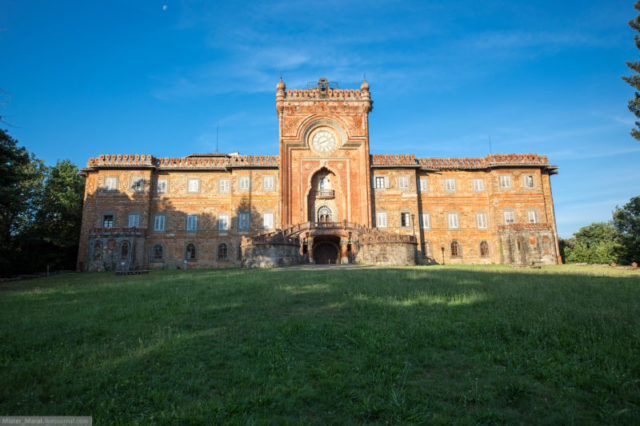
It was not until the 19th century that the castle gained the appearance it is famous for today. Ferdinando Panciatichi Ximenes was responsible for the transformation. A philanthropist, scientific expert, patron of the arts, and politician, he set out to redesign and extend the site. These works were carried out between 1853 and 1889.
At the time, Orientalism was a popular movement in art and architecture. It marked a keen fascination with Middle Eastern, South Asian, and East Asian culture and aesthetics. Ferdinando’s vision was influenced by the Islamic architecture of the Moors, who were the dominant inhabitants of North Africa and Iberia between 711 and 1492. Thus, the castle was designed in the Moorish
Revival style with intricate designs and patterns and a dazzling array of colors. Moroccan mosaics and carved decorations amazed with their complexity and beauty.
Sammezzano Castle has 365 rooms – one for every day of the year. No room is like any other; each of them has a unique design that differs from the rest. Inside it feels like a surreal labyrinth. The castle was fit for a king, and indeed, in 1878 the King of Italy Umberto I lived there.
Apart from redesigning the castle, Ferdinando also created a parkland of 450 acres – one of the largest in Tuscany. He planted some imported trees and enhanced the park with small structures in the Moorish style, such as fountains and pools. Just as the castle is an architectural wonder, the parkland is a botanical one, even though only a few of the trees planted by Ferdinando have survived. The park is home to the largest group of giant sequoias in Italy, with 57 trees each over 115 feet tall. The most famous sequoia on the site is the “twin-sequoia.” It is 164 feet tall and has a circumference of 28 feet.
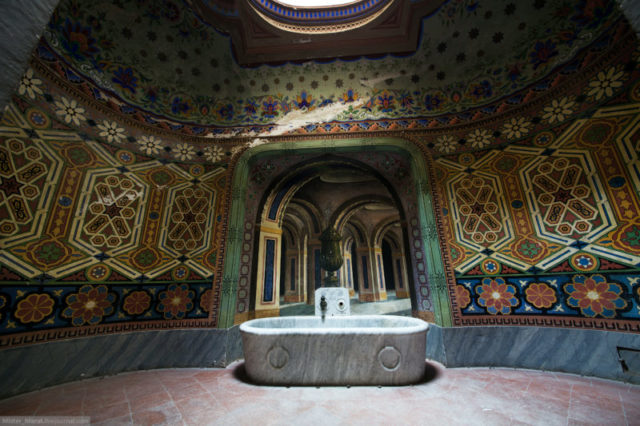
After the Second World War, Sammezzano Castle was converted into a luxury hotel. A stay cost a fortune and only the richest could afford it. There were apartments, a spa, a country club, and a golf course.
In the 1990s, the hotel’s business started to decline. It was running out of money and the company was unable to pay the expenses of running it anymore, so it was closed.
The castle was abandoned but did not descend into ruins. During this time, most of the furniture was looted. Local volunteers tried to save the site. They visited regularly and inspected the premises to protect it from marauders. They barred the windows on the ground floor to prevent people from entering – a measure they funded themselves.
There were some plans to revive the site as a hotel and make it into a major tourist attraction. These plans were initiated by the Italian-British holding Sammezzano Castle Srl, which came to own the castle in the late 1990s, but were never actually realized.
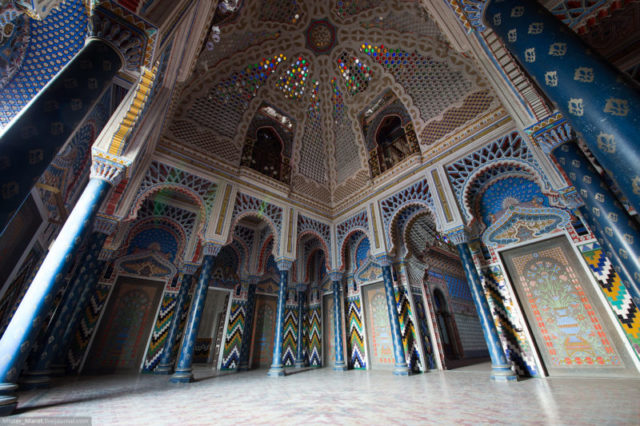
While the castle was abandoned, it earned the informal name “Non plus ultra,” which was especially popular among urban explorers. “Non plus ultra” is actually the writing above an archway in the castle. It translates from Latin as “the highest point of culmination.” In Greek mythology, this was the warning that marked the edge of the world. In this context, it most likely means that the castle with its surreal, breathtaking interiors is literally taking the visitor beyond this world.
It remained vacant until a committee was formed to revive it. The committee FPXA 1813-2013 was called for the bicentenary of the birth of Ferdinando Panciatichi Ximenes. The intention of the committee was to preserve and promote Ferdinando’s legacy. Visits and public openings were organized but were rare.
In 2017, Sammezzano Castle and its land were auctioned off. Helitrope Limited, a Dubai-based company, purchased it for 15.4 million euros (18 million dollars). At the time of purchase, the site was again in a state of decline. The lack of repairs throughout the years of abandonment had led to water damage and deterioration of the fabric of the building. In 2018, Sammezzano Castle was shortlisted for Europe’s 7 Most Endangered heritage sites programme.
A big thank you to Marat Dupri for the fantastic photographs (all taken in 2015). Check out his LiveJournal and Facebook.
